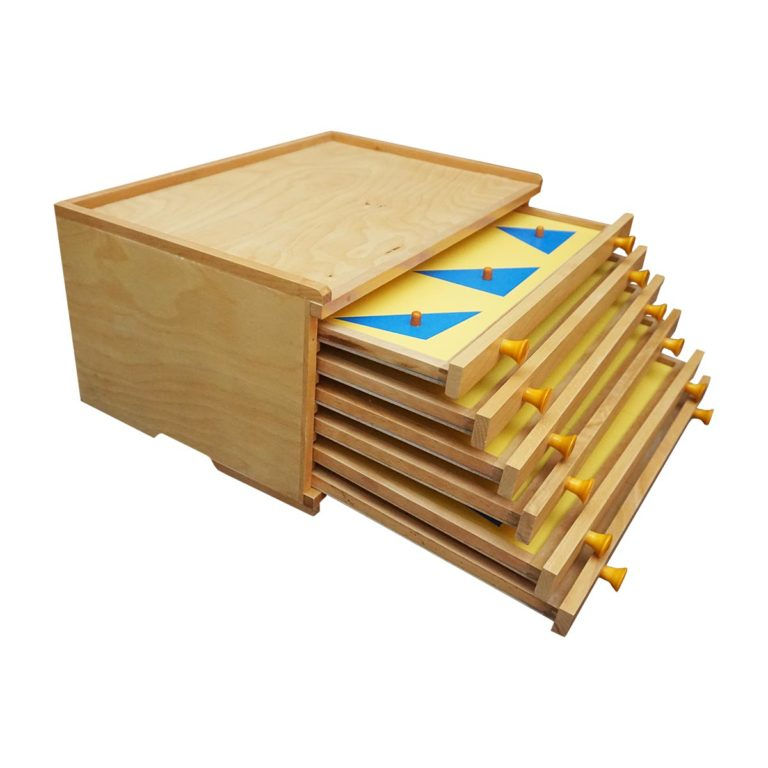1. Drawer 1: Circles
o Shapes: 6 circles with increasing diameters.
o Learning Focus: This drawer helps children understand the concept of circles and how their size changes with diameter. It can be a fun way to introduce the idea of measurement and proportion.
2. Drawer 2: Quadrilaterals
o Shapes: 4 quadrilateral insets—rhombus, parallelogram, trapezium, and trapezoid.
o Learning Focus: Children learn about different types of four-sided shapes, each with distinct properties. For example, rhombuses have equal sides, while parallelograms have opposite sides that are parallel.
3. Drawer 3: Triangles
o Shapes: 6 triangles with varying angles.
o Learning Focus: This teaches children the different types of triangles—scalene, isosceles, and equilateral—by demonstrating the variation in angles and sides.
4. Drawer 4: Regular Polygons
o Shapes: Pentagon, hexagon, heptagon, octagon, nonagon, and decagon.
o Learning Focus: This drawer exposes children to regular polygons, helping them understand the concept of polygons with equal sides and angles. They can also learn how the number of sides affects the shape’s appearance.
5. Drawer 5: Curvilinear Shapes
o Shapes: Ellipse, oval, curvilinear triangle, and rosette.
o Learning Focus: These shapes introduce children to curves and more complex forms that differ from straight-edged polygons, expanding their understanding of how shapes can vary.
6. Drawer 6: Right-Angled Quadrilaterals
o Shapes: 5 rectangles and 1 square.
o Learning Focus: This section reinforces the concept of right angles and introduces the difference between squares (all sides equal) and rectangles (opposite sides equal).














